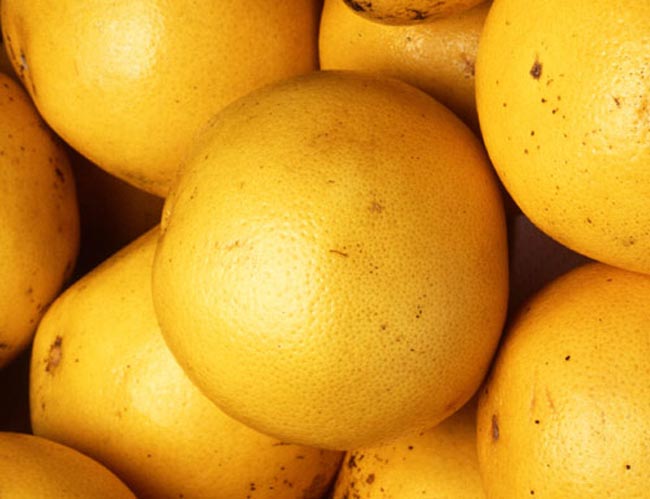FDA: Irradiated Food Won't Be Labeled as Such

The U.S. Food and Drug administration has finally figured out a way to ease people's concern about food irradiation, the process of exposing food to ionizing radiation to kill bacteria and extend shelf life. The FDA solution? Simply don't tell folks it is being used.
On April 4 the FDA proposed a revision to the law requiring proper labeling for foods treated with irradiation. Apparently consumers have been a little queasy about buying foods stamped "treated with irradiation," the wording required since 1986.
So the new plan would be to change the name "irradiation" to "pasteurization" or some more fanciful term, or just forgo the crazy, cumbersome label idea all together.
Very safe, they say
Fortunately, what you don't know won't hurt you. Probably. There are some concerns about harmful chemicals created by the treatment. But irradiation, as menacing as it sounds, is widely endorsed by scientists and food safety experts worldwide. The FDA began approving its use as far back as 1963, for wheat and flour.
Like vaccination or fluoridation, irradiation is a quick and inexpensive method to yield big health gains with minimal risk—the essence of public health. This is why respectable health bodies such as the World Health Organization, the Food and Agricultural Organization and the Centers for Disease Control and Prevention all are in favor of the large-scale use of irradiation.
Irradiation entails bombarding food---meats, vegetables, grains, spices---with gamma rays or X-rays or with high-energy electrons. The irradiation can kill potentially deadly pathogens munching on our food, such as E. coli on spinach, which during last year's outbreak killed three people and sickening untold more.
Get the world’s most fascinating discoveries delivered straight to your inbox.
The pros
Food-borne pathogens cause an estimated 76 million illnesses, 323,000 hospitalizations and 5,000 deaths annually in the United States, according to a 1999 study. Irradiation could be a way to improve this sad situation.
Although the U.S. government has a history of being less than forthright about the dangers of radiation (duck and cover, anyone?), most of the worries about irradiation are unfounded. The energies used are too low to produce radioactivity. Any damage to food from irradiation is the same or no worse than damage caused by cooking, freezing, pasteurizing or canning. And there is some but not significant loss of vitamins B1, C and E.
You could argue, in fact, that irradiated food can be healthier. Irradiation can extend shelf life by slowing the growth of bacteria and mold. This means that food manufacturers need not use fumigants or artificial preservatives, which can carry health risks. Also, some fruits can be harvested when ripe, when they are most nutritious, and treated with irradiation to retard spoilage.
The cons
Certain facts cannot be sugarcoated. Irradiation alters the taste and texture of some foods, particularly fatty foods such as dairy and beef. Lettuce and spinach hold up well, but tomatoes get mushy.
Concerns about irradiation generating free radicals or other harmful chemicals, based on early studies, have largely been put to rest. But one legitimate concern that remains is the presence of chemicals called 2-alkylcyclobutanones in irradiated foods. A group led by Francis Raul in 2002 found that these chemicals can settle in fat tissue and are associated with colon cancer in laboratory rats.
Deja Mooo
The FDA's non-labeling solution might sound familiar. The agency has proposed that no labeling should be required for animal products such as beef and milk derived from clones. Once again, consumer hesitation over a word, this time "clone," was at the forefront.
Switching the word "irradiation" to "pasteurization," as the FDA proposes, goes against the FDA's own consumer survey data that found that consumers want labeling to provide, not hide, information. Pasteurization is totally different, using heat to kill bacteria; it would be more accurate but perhaps more insidious to call irradiation "washed with light beams."
The bigger problem
Of course, washing food with light beams does nothing to address the bigger problem in the United States of massive, centralized food-processing factories, the source of these massive, decentralized bacterial outbreaks.
In Japan it is not unnatural to eat raw eggs, meat or fish. This is possible not because of light-beam washing, er, irradiation. Rather, food production is local, delivered from farm to fork in a day or two. Sanitation practices are far better in Japan, too.
In the United States, irradiation would be just a one-shot deal at the factory. There are thousands of miles and dozens of dirty hands to contend with after the food leaves the factory. Irradiation works quite well, but only until the food is contaminated elsewhere in the food-supply chain.
You have until July 3 to share your opinion with the FDA if you don't like the plan. The petition is posted here.
Christopher Wanjek is the author of the books “Bad Medicine” and “Food At Work.” Got a question about Bad Medicine? Email Wanjek. If it’s really bad, he just might answer it in a future column. Bad Medicine appears each Tuesday on LIveScience.
- The Biggest Popular Myths

Christopher Wanjek is a Live Science contributor and a health and science writer. He is the author of three science books: Spacefarers (2020), Food at Work (2005) and Bad Medicine (2003). His "Food at Work" book and project, concerning workers' health, safety and productivity, was commissioned by the U.N.'s International Labor Organization. For Live Science, Christopher covers public health, nutrition and biology, and he has written extensively for The Washington Post and Sky & Telescope among others, as well as for the NASA Goddard Space Flight Center, where he was a senior writer. Christopher holds a Master of Health degree from Harvard School of Public Health and a degree in journalism from Temple University.


